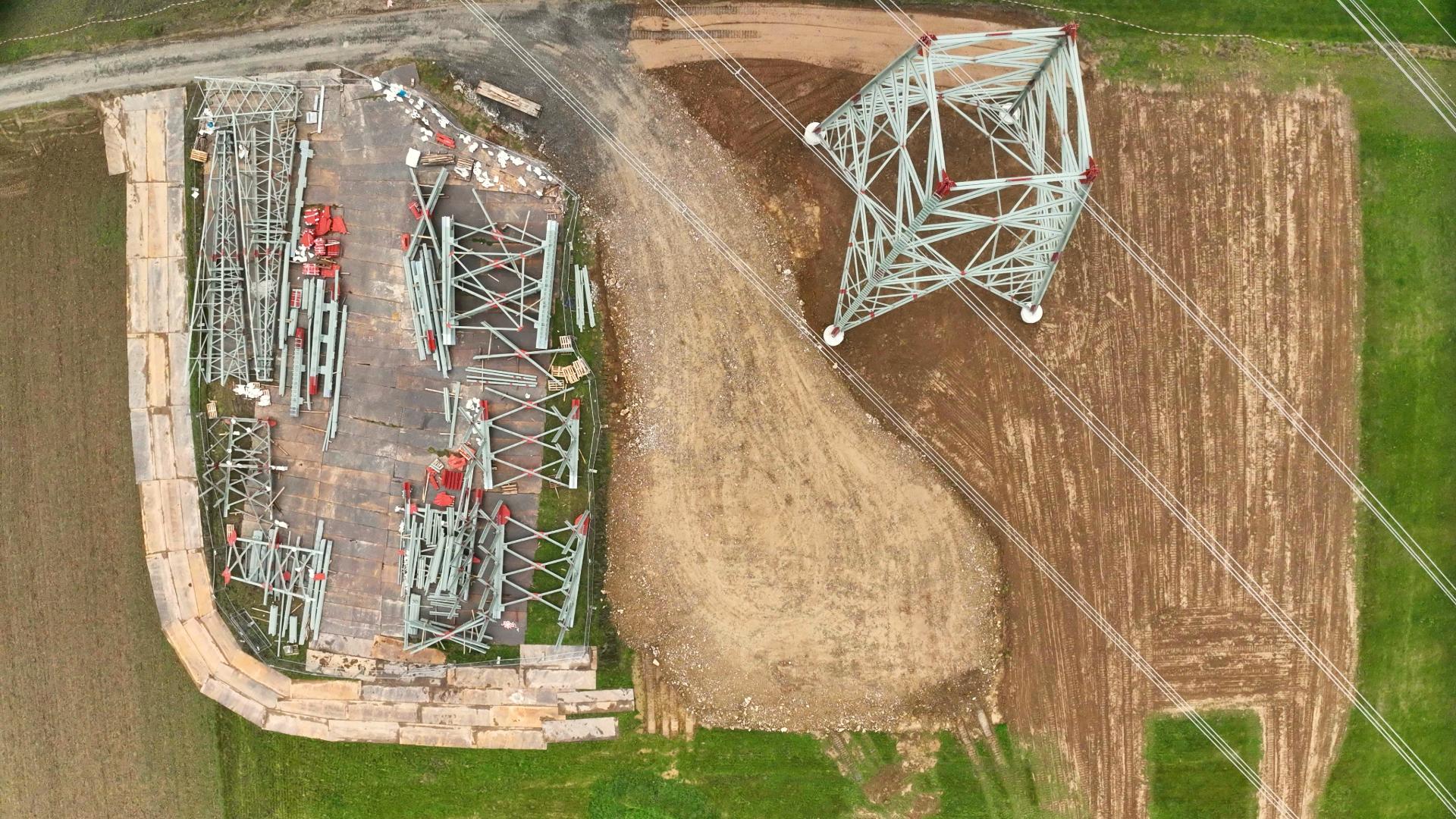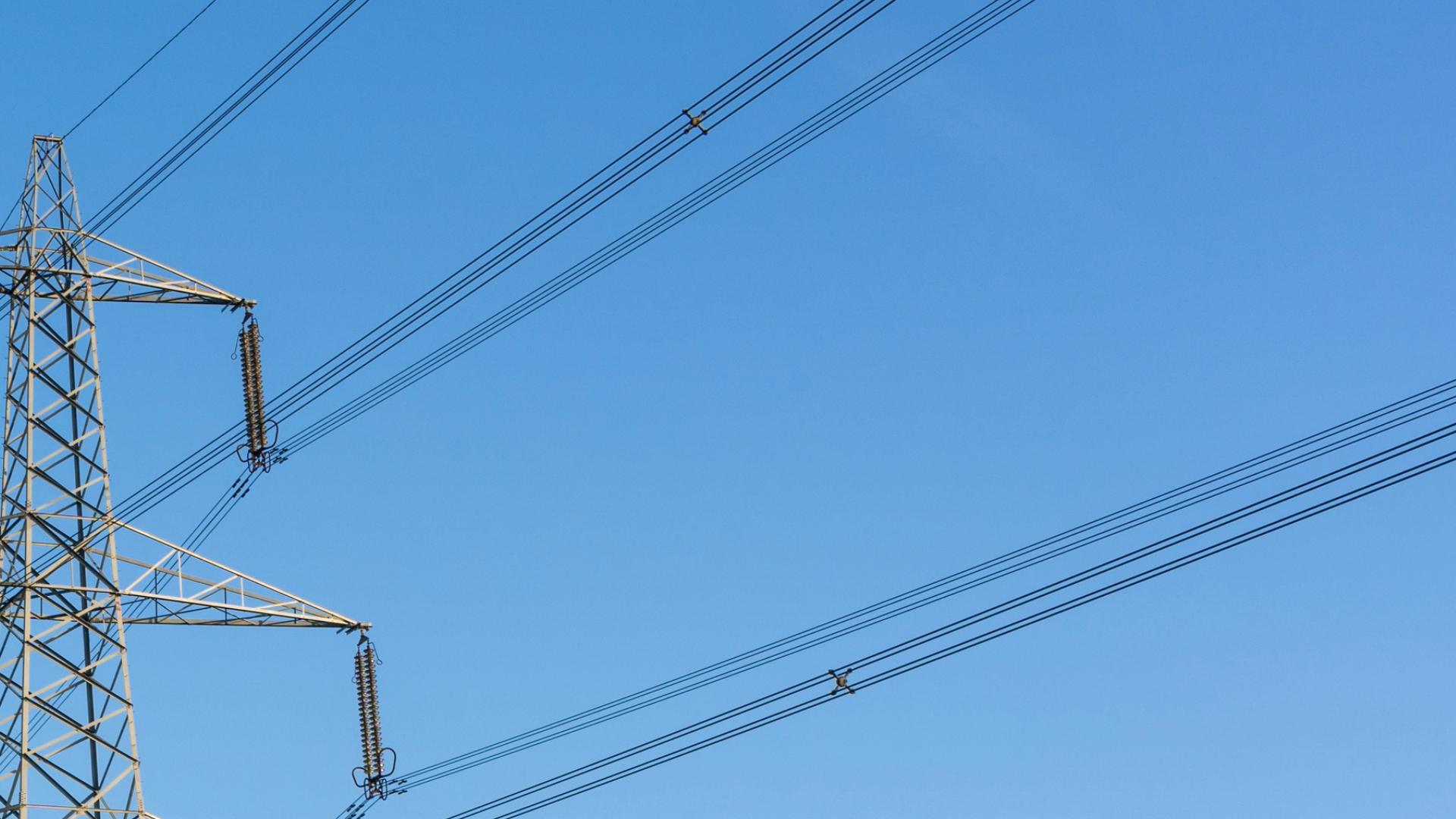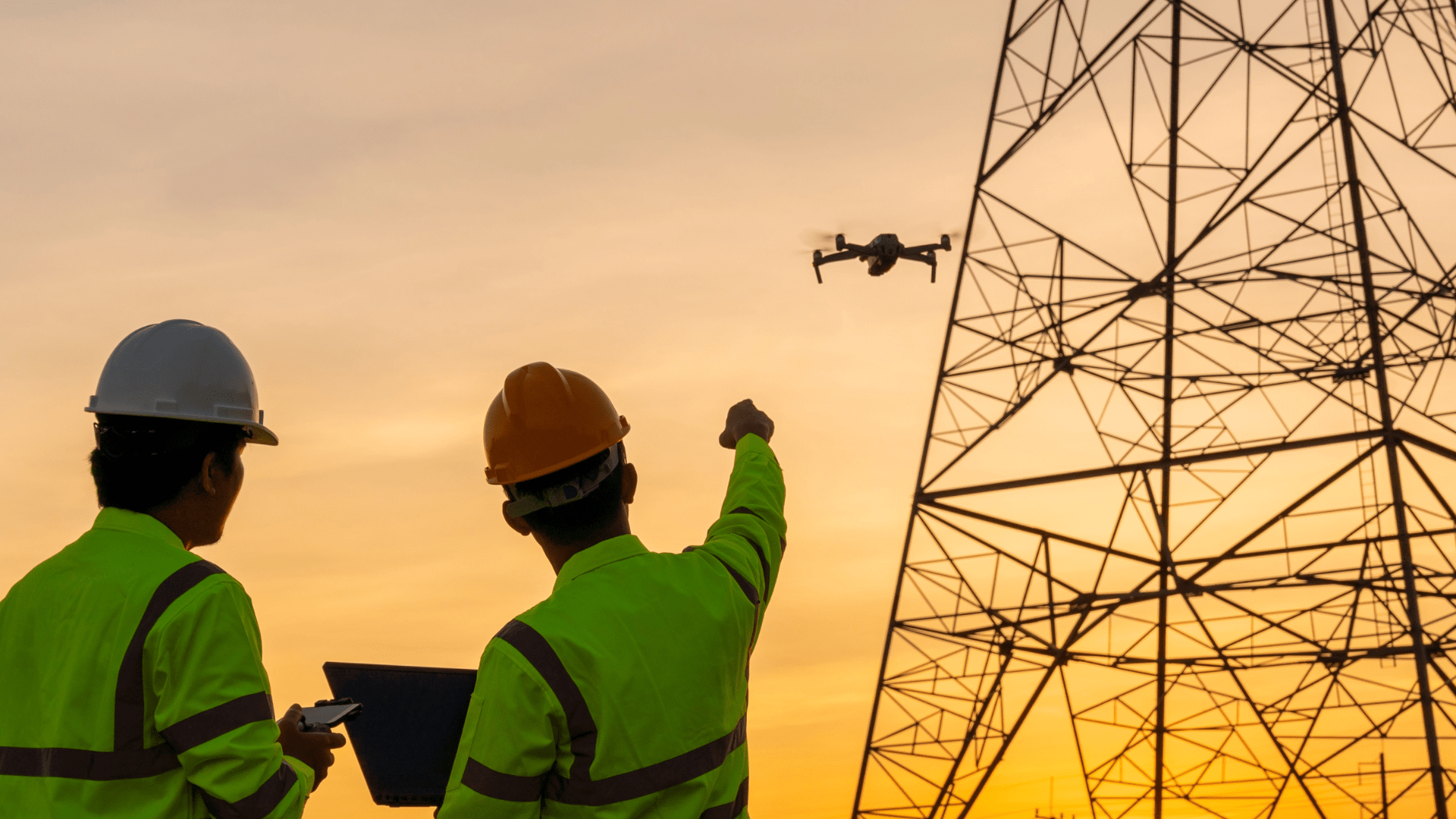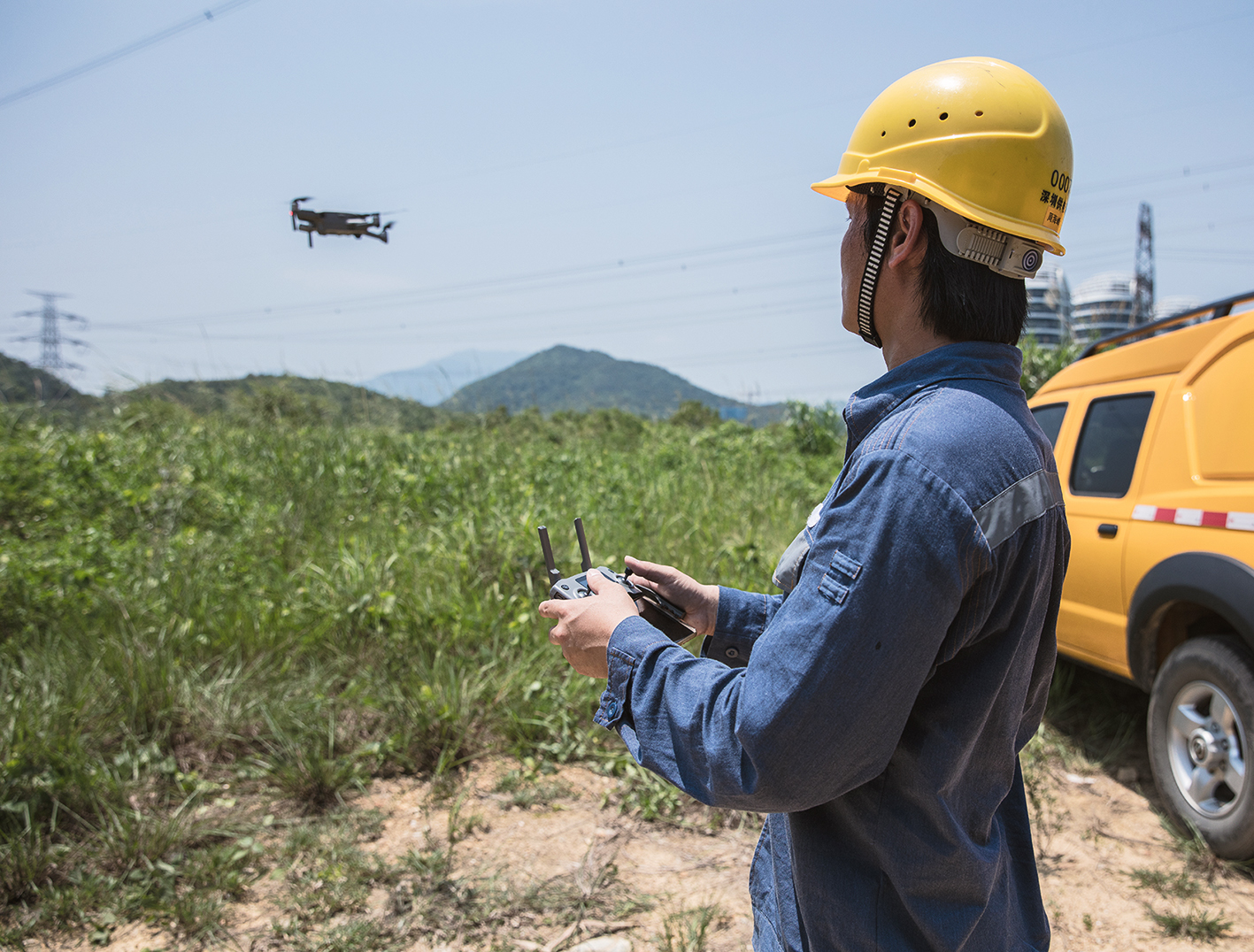Kaum ein anderes Objekt begegnet uns im Alltag so häufig und wird dennoch kaum bewusst wahrgenommen, wie der Strommast. Vor allem im ländlichen Bereich sind Freileitungsmasten, wie Strommasten eigentlich korrekt heißen, neben Windkraftanlagen ein prägendes Bild. Sie erreichen in Deutschland Höhen von bis zu 227 m. Die Inspektion von Strommasten ist dabei eine arbeits- und kostenintensive Tätigkeit, welche mit Hilfe von Drohnen sicherer und besser erledigt werden kann. Für die Skalierbarkeit sorgt die effiziente Projektmanagementlösung von FlyNex, speziell für Drohnenprojekte.
Inhalt
Über 125 Jahre Geschichte treffen auf Drohnen
Regelmäßige Inspektion ist zwingend für eine sichere Stromversorgung
Warum Drohnen bei der Inspektion von Strommasten einsetzen
1) In puncto Arbeitsschutz ist die Drohne unschlagbar
2) Endlich vernünftige Bestandsdaten erheben
3) Drohnen sind wirtschaftlich und schnell
Einfache Integration von Drohnen durch gutes Projektmanagement
Über 125 Jahre Geschichte treffen auf Drohnen
Die ersten Strommasten wurden in Deutschland bereits 1892 aufgestellt. Heute sind es mehr als 350.000, welche regelmäßig inspiziert werden müssen. Bevor wir aber zu den Vorteilen der Mastinspektion mittels Drohne kommen, wollen wir kurz das Stromnetz und einige verschiedene Mastformen skizzieren.
Das Stromnetz in Deutschland ist in vier Ebenen unterteilt, wobei teilweise spezifische Strommasten vorkommen. Das Übertragungsnetz ist hierbei für den weiträumigen Transport von Strom zuständig. Diese Aufgabe sowie die Wartung und den Ausbau des Übertragungsnetzes übernehmen in Deutschland die Unternehmen Tennet, 50 Hertz, Amprion und TransnetBW. Übliche Spannungen sind hierbei 220 Kilovolt (kV) oder 380 kV. Typische Mastformen sind:
- der Donaumast, welcher aus zwei übereinanderliegenden Traversen besteht, wobei in der Regel die schmalere oben liegt,
- der Tonnenmast, welcher aus drei übereinanderliegenden Traversen besteht. Die mittlere Traverse ist dabei die breiteste, wodurch sich die typische Tonnenform ergibt,
- der Portalmast, welcher aus mindestens zwei Stützen besteht, die große Stabilität versprechen, jedoch einen höheren Platzbedarf benötigen,
- der Deltamast, bei welchem die leitungsführende Traverse auf einer V-förmigen Gabel sitzt,
- der Tannenbaummast, wobei im Vergleich zum Tonnenmast die größte Traverse unten liegt, die zweitgrößte in der Mitte und die kleinste oben, wodurch sich die typische Tannenbaumform ergibt.

Die weiteren Netze sind das Verteilnetz für die Versorgung von Industrieunternehmen und die Verteilung des Stromes auf dem Weg zum Endverbraucher, die lokalen Netze zur Versorgung größerer Abnehmer wie z.B. Krankenhäuser und zur weiteren Verteilung und schließlich das Niederspannungsnetz zur Verteilung und Lieferung an Endabnehmer wie kleine Unternehmen oder private Haushalte. Aus diesem Bereich kennt man die typische Stromspannung von 230 Volt, mit welcher z.B. der morgendliche Kaffee zubereitet wird.
Regelmäßige Inspektion ist zwingend für eine sichere Stromversorgung
Egal wie sich Formen und Materialien von Strommasten in Zukunft auch verändern werden, die Notwendigkeit zu regelmäßigen Inspektionen wird bestehen bleiben. Stromnetzbetreiber sind hierbei gem. § 11 Energiewirtschaftsgesetz bzgl. der Wartung und des Betriebs gesetzlich verpflichtet, „ein sicheres, zuverlässiges und leistungsfähiges Energieversorgungsnetz“ zu gewährleisten. Immerhin haben Stahlgittermasten eine Lebensdauer von etwa 80 bis 100 Jahren.
Wie wichtig die regelmäßige Inspektion von Strommasten ist, dürfte einigen Lesern noch aus dem Jahr 1999 bekannt sein. Der Orkan Lothar zerstörte damals unzählige Strommasten, die aus dem sogenannten Thomasstahl bestanden. Thomasstahl neigt zur vorzeitigen Versprödung und mindert damit über die Zeit die Belastbarkeit der Masten. Auch Betonmasten sind bei extremen Witterungsverhältnissen besonders anfällig. Auch im Jahr 2005 fegte der Orkan Dorian über Deutschland und sorgte dafür, dass Bäume in Stromleitungen fielen. Eine Nachinspektion der Strommasten ist nach solchen extremen Ereignissen unerlässlich, um die Funktionsfähigkeit des Stromnetzes nachhaltig zu gewährleisten.
Warum Drohnen bei der Inspektion von Strommasten einsetzen?
In puncto Arbeitsschutz ist die Drohne unschlagbar
Strommasten haben je nach Netz eine durchschnittliche Höhe von etwa 22 m bei 110 kV Leitungen und 83 m bei 380 kV Leitungen. Im Übertragungsnetz existieren etwa 80.000 Masten in Deutschland. Diese werden heute meistens durch Beobachtung vom Boden mittels eines Fernglases oder durch Besteigung inspiziert. Inspektionen mittels Hubschrauber sind ebenfalls regelmäßig notwendig. Ein besonderes Augenmerk im Rahmen dieser Inspektionen wird auf die Keramik-Isolatoren gelegt. Hierfür ist meistens eine Besteigung durch Industriekletterer notwendig. Gerade bei schlechtem Wetter oder schwer erreichbaren Masten ist das Arbeiten an teilweise stromführenden Bauteilen kein Vergnügen und stets mit einem Risiko für Leib und Leben verbunden. Kletterer müssen zudem stets durch eine zweite Person gesichert werden. Eine Drohne schafft hier deutliche Abhilfe, da das Klettern auf den Strommast für die reine Inspektion entfällt. Es muss nur auf die Masten geklettert werden, an welchen tatsächlich ein zu reparierender Schaden festgestellt wurde. Daher sollten Drohnen unbedingt in Inspektionsteams implementiert werden.
Endlich vernünftige Bestandsdaten erheben
Bei der konventionellen Inspektion werden meist analoge Daten erhoben, welche sich nicht nachhaltig auswerten lassen und bestenfalls als Checklisten in einem Stahlschrank enden. Die Information darüber, welche Schäden an welchem Masten festgestellt wurden, lässt sich somit nicht nachhaltig auswerten. Forecasts oder Vergleiche mit Bestandsdaten vorheriger Inspektionen fallen schwer. Die meisten Inspektionen stellen damit reine Momentaufnahmen dar.
Drohnen hingegen können unmittelbar und 360° um einen Strommast fliegen, gezielte Aufnahmen generieren und in Echtzeit an den am Boden stehenden Inspekteur übertragen werden. Hierbei lassen z. B. Schäden an Isolatoren oder Leiterseilen mit Hilfe verschiedener Sensoriken wie optischen Kameras, Infrarot- oder Ultraschallsensoren deutlich leichter und schneller feststellen. Diese digitalen Daten lassen sich ebenfalls in bestehende eigene Informationssysteme integrieren und helfen somit den Datenbestand und Informationsgehalt mit jeder Inspektion anzureichern und zu verbessern. Drohnen sind daher eine sinnvolle Ergänzung für Wartungs- und Inspektionsteams.
Kosteneinsparung von über 37 %
Im Vergleich zu einer klassischen Besteigung eines Strommastes ist die Drohne deutlich schneller. Sie benötigt durchschnittlich nur etwa ein Drittel der Zeit eines Kletterers je Strommast und reduziert den Zeitaufwand damit um rund 60 %. Perspektivisch sind die Potentiale noch größer, wenn die Drohne eigenständig von einem zum nächsten Mast fliegen darf.
Unter der Annahme, dass parallel zum Drohnenpiloten, welcher z.B. ein Kletterer mit zusätzlicher Drohnenexpertise sein kann, noch ein weiterer Kletterer oder Monteur dem Inspektionsteam angehört, ergeben sich Kosteneinsparungen allein aufgrund des Zeitgewinns von über 37 %.
Einfache Integration von Drohnen durch gutes Projektmanagement
Wie dargestellt lohnt sich die Integration von Drohnen in Inspektionsteams in jedem Fall, denn sie stellen eine effiziente und sinnvolle Ergänzung im Bereich der Inspektion von Strommasten dar. Dabei ist eine gute Softwarelösung für das Management von Drohnenprojekten unerlässlich.
Drohneninspektionen selbst durchführen oder outsourcen
FlyNex bietet hierzu eine qualitative Lösung, welche es Ihnen ermöglicht die gesamte Projektplanung, die eigentliche Befliegung und die Analyse der generierten Daten immer im Blick zu behalten. Damit können Sie bundesweit verschiedene Projekte, u.a. zur drohnengestützten Inspektion von Strommasten, koordinieren und behalten stets den Überblick.
Weitere Vorteile von FlyNex:
- umfangreiches Rollen- und Rechtemodell für ein revisionssicheres Projektmanagement,
- nur Sie haben Zugriff auf Ihre Daten und Sie bestimmen, wer welche Informationen im Rahmen der Projekte einsehen darf,
- einfaches Befolgen aller Auflagen, welche für Drohnenflüge gelten, aufgrund des umfangreichsten und offiziellen Geodatensatzes für Deutschland,
- Management aller Piloten und Drohnen inkl. Versicherungen und Kenntnisnachweise,
- Projektplanung inkl. Projektsteckbrief für leichte Antragsstellung,
- Datenschutz ist stets gewährleistet.
Mit Hilfe von FlyNex können Sie die Inspektionsaufträge auch an andere Firmen vergeben, sodass Sie ganz leicht von den Vorteilen von Drohnen profitieren können, ohne sich selbst eigene Drohnen oder Piloten in Ihr Portfolio holen zu müssen. Dabei behalten Sie im Projektmanagement immer die Oberhand über alle Informationen und sind stets aktuell über den jeweiligen Projektstatus informiert. Darüber hinaus erhalten Sie deutlich schneller als bisher die analysierten Ergebnisse der Mastinspektionen und können diese Daten in Ihre Systeme integrieren.
Starten Sie direkt durch und sichern Sie sich Ihren Projekterfolg.
Wie Drohnen weiter für die Inspektion von Stromleitungen, die Messung von elektrischen und magnetischen Feldern oder das Vegetationsmanagement um Stromleitungen eingesetzt werden können, erfahren Sie in einem späteren Beitrag.
Möchten Sie stets auf dem aktuellen Stand der Drohnenanwendungen bleiben? Dann melden Sie sich noch heute auf flynex.io für unseren Newsletter an.
Ihr FlyNex Team



